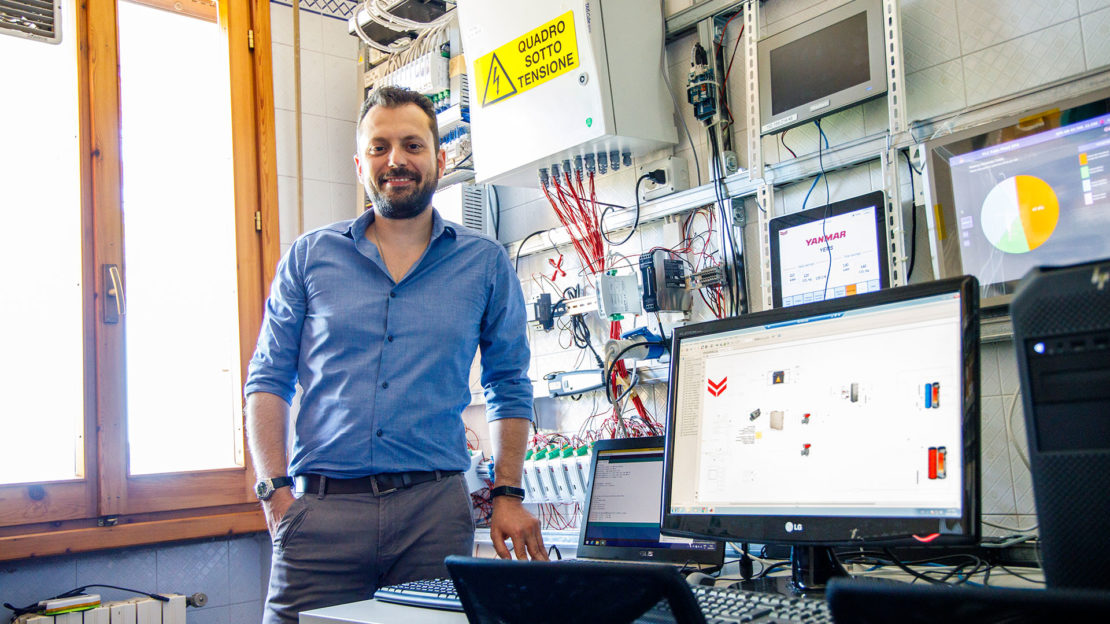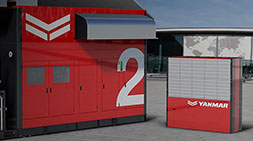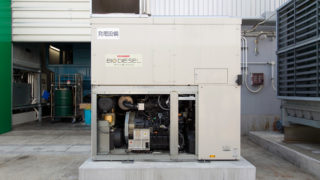When it comes to energy production, everyone is in agreement that our ageing national grid infrastructures need to be upgraded or replaced with more efficient, environmentally friendly and secure networks. However, how smart are ‘smart grids’ and what’s the ‘smartest’ way for them to incorporate the latest developments in ‘virtual’ power plant technology? Fortunately, Yanmar and its European research partners are working behind the scenes to help provide the answers.
Get smart!
The problem with electricity is that most of us take it completely for granted and don’t give a second thought to where and how it is made. We’re aware of the massive power stations, sub-stations, transformers and huge network of transmission lines that make up the national grids. However, we don’t really think about the impact of what happens every time millions of us turn on the lights, boil the kettle or – increasingly – plug-in electric cars.
Some of our grids were designed and constructed over a century ago and upgraded through the decades, but imagine how our electricity demands and usage have changed in that time. Most ‘essential’ devices hadn’t been invented 20 years ago; almost everything that used to be mechanical is now computer-controlled and automated; and as we begin to enter a new era of e-mobility, the significant extra demands this will put on our ageing grids will stretch them to capacity – and almost certainly beyond.
The energy world is changing completely,” – Professor Federico Silvestro
“The energy world is changing completely,” explains Yanmar collaborator, Professor Federico Silvestro of the University of Genoa. “We are moving away from large power plants to smaller, more abundantly ‘distributed energy resources’, which need virtually aggregating in order to provide energy to customers. The energy vision that we are facing is to have the so-called ‘internet of energy’.”
A component of this Internet of Energy, the smart grid, has the capacity to combine distributed energy resources from a network of individual generators to produce the power required when it could be prohibitively expensive to buy. This advanced digital network is specifically designed to manage our increasingly complex electricity needs, and what makes it ‘smart’ is its two-way interactive capacity, improved security, reliability and efficiency.
With AI algorithm technology capable of energy market financial forecasting (based on weather monitoring) a smart network has the capacity to make more reliable and efficient purchase decisions. It transmits electricity more efficiently and is able to restore it more rapidly after power outages. It can also integrate both large-scale commercial and smaller-scale, privately-owned power generation systems, including a mix of renewables.
This peer-to-peer ‘community’ aspect is potentially going to be the most noticeable change in terms of consumer participation in the supply of the future energy mix. It will hopefully change the way we think about our energy requirements – and usage – forever.
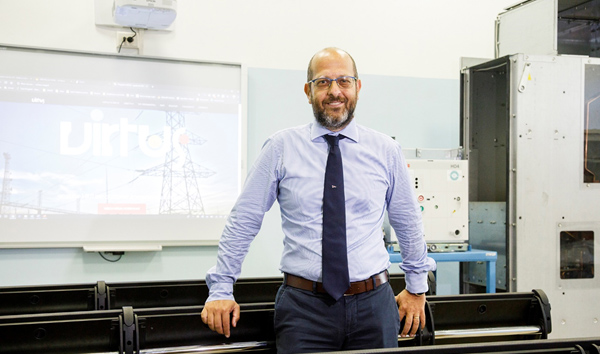
Researching essential technologies
Yanmar R&D Europe S.R.L. was established in Italy in 2011. Its base in Florence, Italy, is the Yanmar Group’s first research and development (R&D) centre in Europe and its mission is to create the next generation of technology for the effective use of energy
Teams of project engineers and programmers focus on developing intelligent networks for the management and distribution of energy. They also conduct research projects in cooperation with various other organisations and companies, including local universities.
One such initiative is the development of an intelligent energy management system prototype – YEMS – to work as an interface for balancing demand and production supply across a range of distributed energy resources.
“YEMS is the acronym for ‘Yanmar Energy Management System’,” says Sandro Magnani, Group Leader of the Energy Group at Yanmar R&D Europe. “This device uses artificial intelligence to optimally manage local distributed energy resources to achieve better economic, environmental and technical performance for customers.
“The energy world of the future is one of peer-to-peer technology,”
“Our team consists of AI experts, energy specialists and IT engineers, who share a common goal to further develop the YEMS and achieve the best optimisation of energy. The energy world of the future is one of peer-to-peer technology, in which excess production can be shared with your neighbourhood. This can be achieved with YEMS, using AI and the Cloud.”
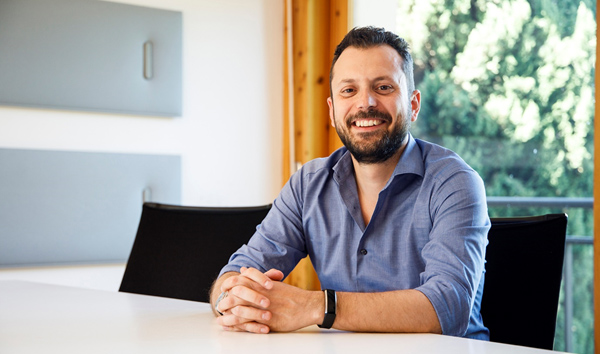
Practical applications at Pontlab
West of Florence, on the road to Pisa is the small industrial town of Pontedera, where for some time Yanmar R&D Europe has carried out research into renewable energy and smart grids for power distribution. Pontedera is also home to the headquarters of Pontlab, a scientific laboratory that performs analysis and durability testing on different types of materials and components for a variety of industries
Due to the amount of test benches used in trials and the nature of the work involved, Pontlab has an extremely high consumption of electrical energy, and hot and cold water. This makes it the perfect place to use several Yanmar heat pumps, while also providing vital development feedback for the YEMS, according to Chief Executive Alexej Gamanets.
“We first started working with the Yanmar European research centre in 2011. Together we had the idea to develop an energy management system at the Pontlab site that could help us reduce our testing costs. The project also gave us the opportunity to install the first Yanmar gas heat pump (GHP) and Yanmar combined heat and power (CHP) units in Italy.”
Alongside the heat pumps, the Pontlab premises have almost every energy generation source currently available, including wind turbine, solar PV and external battery storage cells. In using the CHP and GHP units, combined with renewable technologies, Pontlab could see via the YEMS how it is possible to produce, store, buy (and possibly even sell) energy when favourable conditions allow – and also be able to use this stored energy when it is not convenient to produce it.
“The YEMS provides us with an optimal solution for the daily management of our energy production, storage and interaction with the grid,” confirms Alexej. “A system that allows us to manage a variety of energy sources – such as CHP, GHP, solar, wind and battery storage – is vital for the future.”
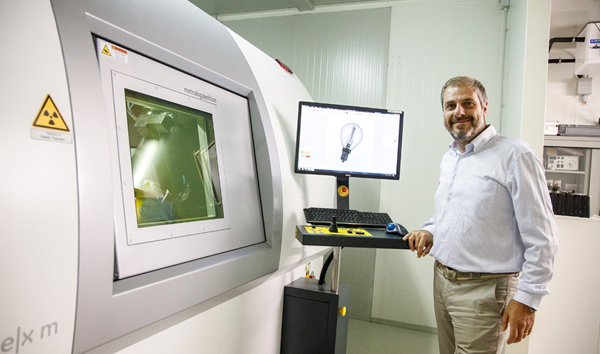
The future is ‘virtually’ here
Pontlab is one of four sites in Italy working together to develop the YEMS prototype. Bologna and Genoa universities are also involved as part of the three-year Yanmar-supported VIRTUS project (virtual management of distributed energy resources). The aim is to develop and implement a virtual power plant (VPP) capable of economic and energy optimisation, and providing ‘real’ services on the open energy market.
VIRTUS exists because VPPs are one of the main components of the smart intelligent electric grids of the future, in which low-carbon and renewable energies are managed through efficiently distributed energy resource aggregation. Recent European directives relating to energy strategy are enforcing member states to use local energy management systems to support traditional electrical plants. This is achieved with flexible contribution by consumers to the benefit of the overall efficiency of the system.
At the University of Genoa, research is being undertaken to develop the YEMS, so that it works in synergy as the local and interactive counterparts of a VPP of the future.
“This is the aggregation of thousands of small resources that are capable of communicating using the YEMS, and then optimally exchanging energy within a VPP,” says the University of Genoa’s Professor Silvestro. “One of the key issues is the scalability of the platform, and the use of ‘big data’ and AI. This is why we are developing a scalable algorithm capable of managing all of this data.
“As such, the university is happy to contribute to the VIRTUS project, because it’s perfectly in line with our research activities into renewable integration and demand response.”
VPPs are without a doubt part of the future of energy generation and distribution. Businesses and individuals will increasingly contribute to making a connected, efficient grid, in which demand and supply can be balanced remotely, and all decentralised units can be linked in a flexible, responsive way.
By combining a variety of energy sources, supported by an efficient energy management system such as YEMS, our digital energy transition and future landscape will thankfully be a sustainable one, in accordance with climate protection goals. Yanmar will continue to advance its research activities in these fields in order to provide value to its customers that is above and beyond expectations.






















